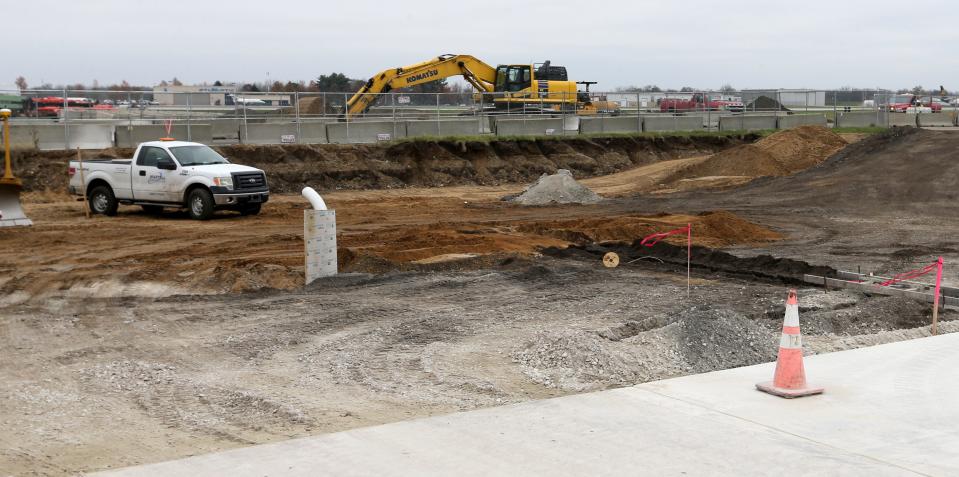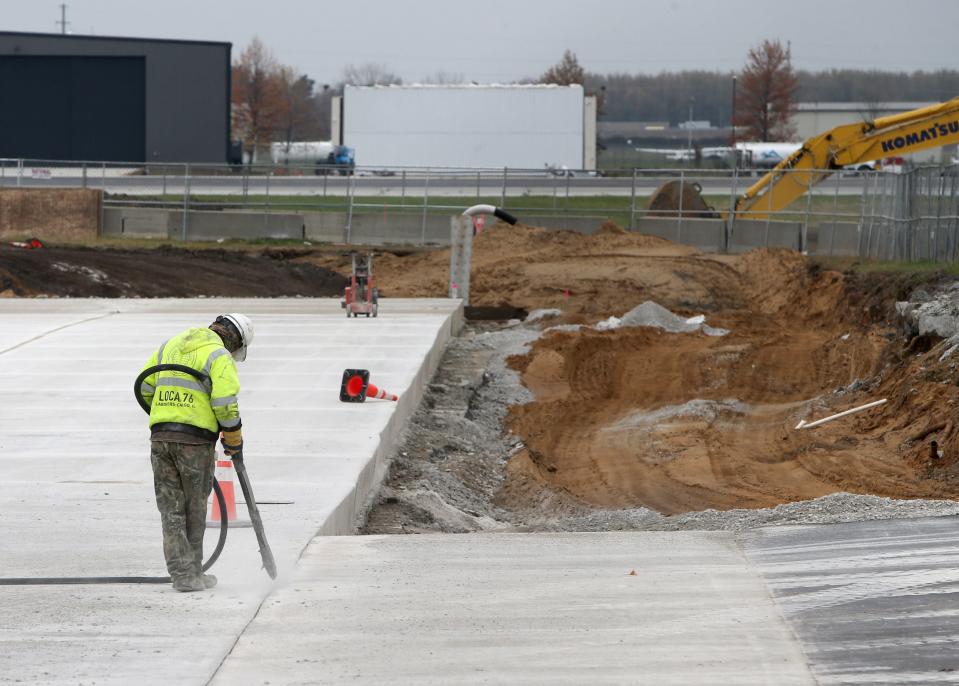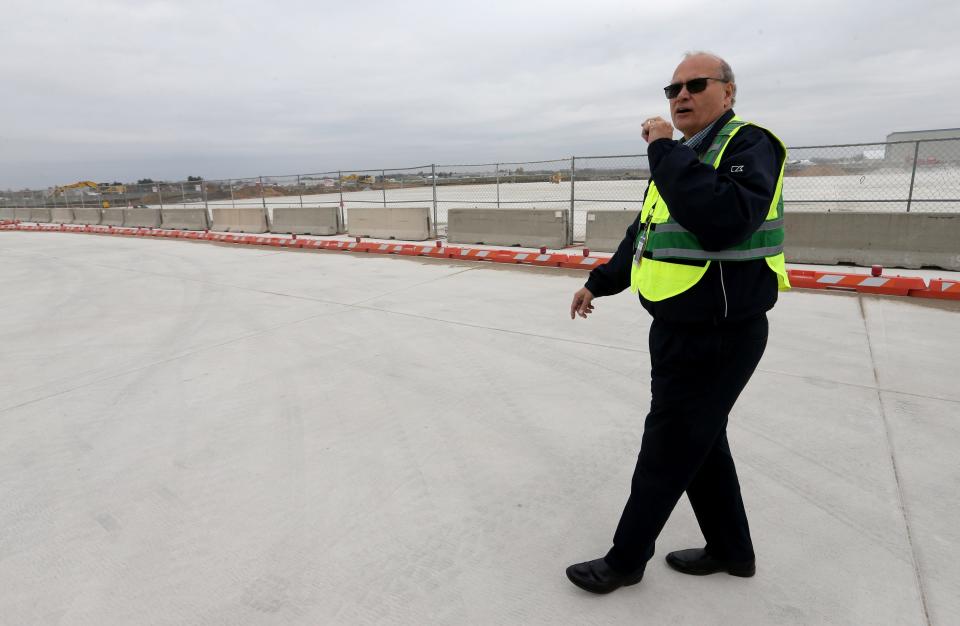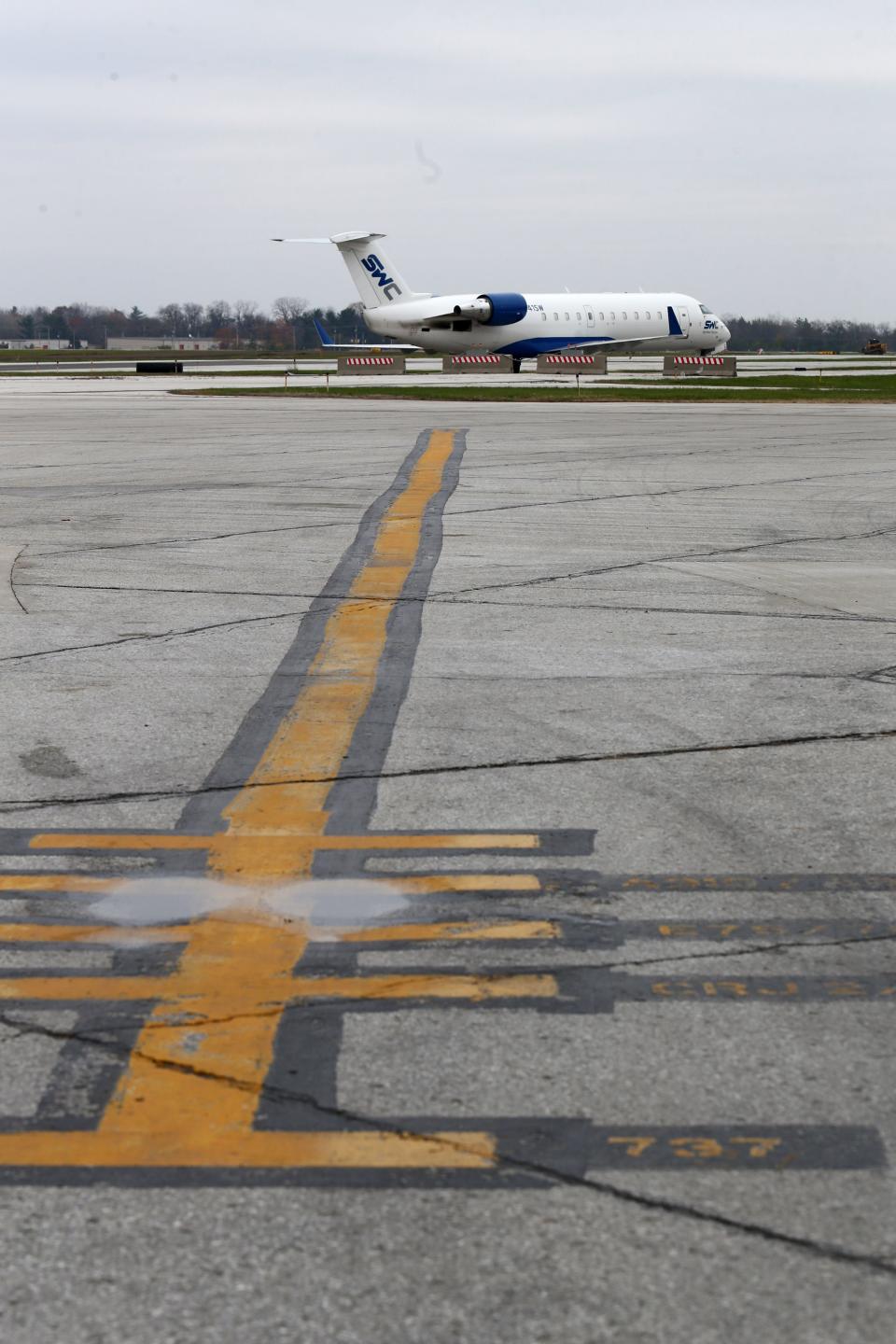The South Bend airport works to get ahead of nearly ubiquitous PFAS contamination problem
SOUTH BEND ― A group of toxic chemicals that are threatening the nation's drinking water supplies have been detected at The South Bend International Airport, and officials there have taken steps to minimize the contamination.
But it's possible some of those toxins, which have been in the area for decades, have seeped into the local aquifer, where area residents get their drinking water, a groundwater expert said.
PFAS ― or per- and polyfluoroalkyl substances ― can cause some forms of cancer, increase cholesterol, lower antibody response to some vaccines and cause birth defects, according to the Centers for Disease Control and Prevention.
Beyond South Bend: 'Forever chemicals' lurk in Midwest soil and drinking water, can lead to health problems
'For decades, airports here and across the country used aqueous film-forming foam (AFFF), which contains up to 50% of PFAS by volume, to fight fires. In recent years, the Federal Aviation Administration has taken steps to limit the use of AFFF, commonly known as firefighting film, at the nation's airports.
Since then, the South Bend airport and others have used the foam only when there's a fire or other emergencies, as opposed to training exercises, said Mike Daigle, executive director of the South Bend airport.

Alternative foams are being developed, but none are as effective as those containing PFAS, Daigle said.
“If it gets down to it, we would use PFAS foams for a real fire in order to save lives,” said Daigle. “It’s still the best product to fight a fuel-based fire.”
As the airport embarked on a more than $70 million project to rebuild its taxiways and aprons in 2019, officials detected PFAS contaminants in the soil, Daigle said. As contaminated soil has been detected, it's been removed and placed in a 200,000-yard containment bag.

The materials will be held at the airport until officials receive instructions on how to dispose of them, said Daigle, adding that the airport relied on historical records of aircraft fires and training exercises to determine where to focus its testing and removal efforts.
In some areas of the airport, Daigle said, only a foot or two of soil had to be removed, but in other spots, workers had to go down about 30 feet to get all the contaminated soil. “I’d be guessing if I estimated how much soil has been removed,” he said, adding that it won’t be nearly enough to fill the bag.

In addition to removing contaminated soil, dozens of groundwater tests also were conducted to determine whether PFAS chemicals were in the water table below the airport property. PFAS was detected, Daigle s aid.
“But we were told that PFAS levels in the groundwater are below federal standards,” said Daigle, adding that there’s no way of knowing whether the chemicals were from the airport foam that migrated through the soil or from any number of other industries or even landfills in the area.
“Knowing what we know now, we’re trying to be proactive,” said Daigle.
But removing the contaminated soil and testing the water table in the immediate area is not enough, said Abinash Agrawal, a groundwater remediation expert and professor of earth and environmental sciences at Wright State University in Ohio.
Because of the length of time that firefighting foam might have been used at the airport, it's possible that the contaminants may have migrated off of the airport property, he said.
"Airport authorities should assess the ground water impacted by the PFAS because the toxins are highly soluble in water, and it moves in the aquifer," Agrawal said. "This can impact the surrounding area, particularly if there are drinking water wells. The spread of PFAS plume, if any, should be characterized and better understood."
It's not clear how much PFAS was detected in the soil and water table at the airport. But the U.S. Environmental Protection Agency's recommended health advisory level for two PFAS compounds known as Perfluorooctanoic acid (PFOA) and perfluorooctane sulfonate (PFOS) are 4 parts per trillion each.
A part per trillion is equivalent to a pinch of salt in 10 tons of potato chips or a grain of sand in an Olympic-size swimming pool.
PFAS is currently unregulated. However, the U.S. EPA is set to decide in the coming weeks whether the limits should regulate PFAS contamination in water systems across the United States ― a move that could increase expenses on water utilities and residents with private drinking water wells.
'Forever chemicals'
The problem with PFAS is that they have been widely used in metal plating, paper production and numerous other industries for decades, said Kyle Doudrick, an environmental engineer at the University of Notre Dame whose lab is working on solutions to deal with PFAS chemicals, nitrates and other types of contaminants that pose environmental and health risks.
With funding from the Department of Defense, Doudrick’s lab at Notre Dame is working on a thermal treatment to remove PFAS from soil, and believes a solution is close at hand. But an even bigger problem is when PFAS gets into groundwater or surface water.

Though useful for making products that resist heat, oil, stains and water, PFAS substances are of concern because they don’t break down in the environment. As a result, they’re sometimes referred to as forever chemicals, and can migrate through soil into ground water or end up in rivers through discharge from wastewater treatment plants.
“It’s safe to assume that every river and lake has PFAS in it,” said Doudrick, adding that PFAS chemicals ultimately end up in fish and other wildlife while humans pick up the chemicals through drinking water, nonstick pans, food wrappers, stain- and water-resistant clothing and many other products.
According to the CDC, more research is needed as to the types and concentration of certain PFAS chemicals that can cause health problems since nearly everyone has at least some level of PFAS in blood serum tests that have been conducted.
Until the U.S. EPA begin regulating PFAS, Doudrick suggest that people be mindful where they get their drinking water, particularly those with wells.

Deeper wells operated by municipalities are more likely to be free of PFAS than shallow wells, Doudrick said. Tests can be conducted for PFAS, but those that want to be cautious should consider using activated carbon, reverse osmosis or ion exchange water treatment.
While the airport and military installations that used the firefighting foams are trying to get ahead of the problem, industries that use PFAS or one of its many variants are trying to maintain its use by making slight alterations.
“The problem is far deeper than just the airport,” said Doudrick, pointing out that it’s commonly used in several industries. “There’s a push from industry to regulate a select few (PFAS chemicals) without knowing what the health consequence of the others might be.”
Though health officials know about PFAS, they lack the resources to test individual wells, putting the burden on homeowners to determine whether their residential wells might be contaminated by the chemical.
For his part, Daigle simply wants to get ahead of the issue, knowing that the airport used PFAS products for decades to fight fires.
“When we started learning about PFAS, we decided to act to mitigate the problem,” he said. “We didn’t want to cause further problems and further contamination by delaying.”
This article originally appeared on South Bend Tribune: South Bend airport takes sizable steps to eliminate PFAS contamination

